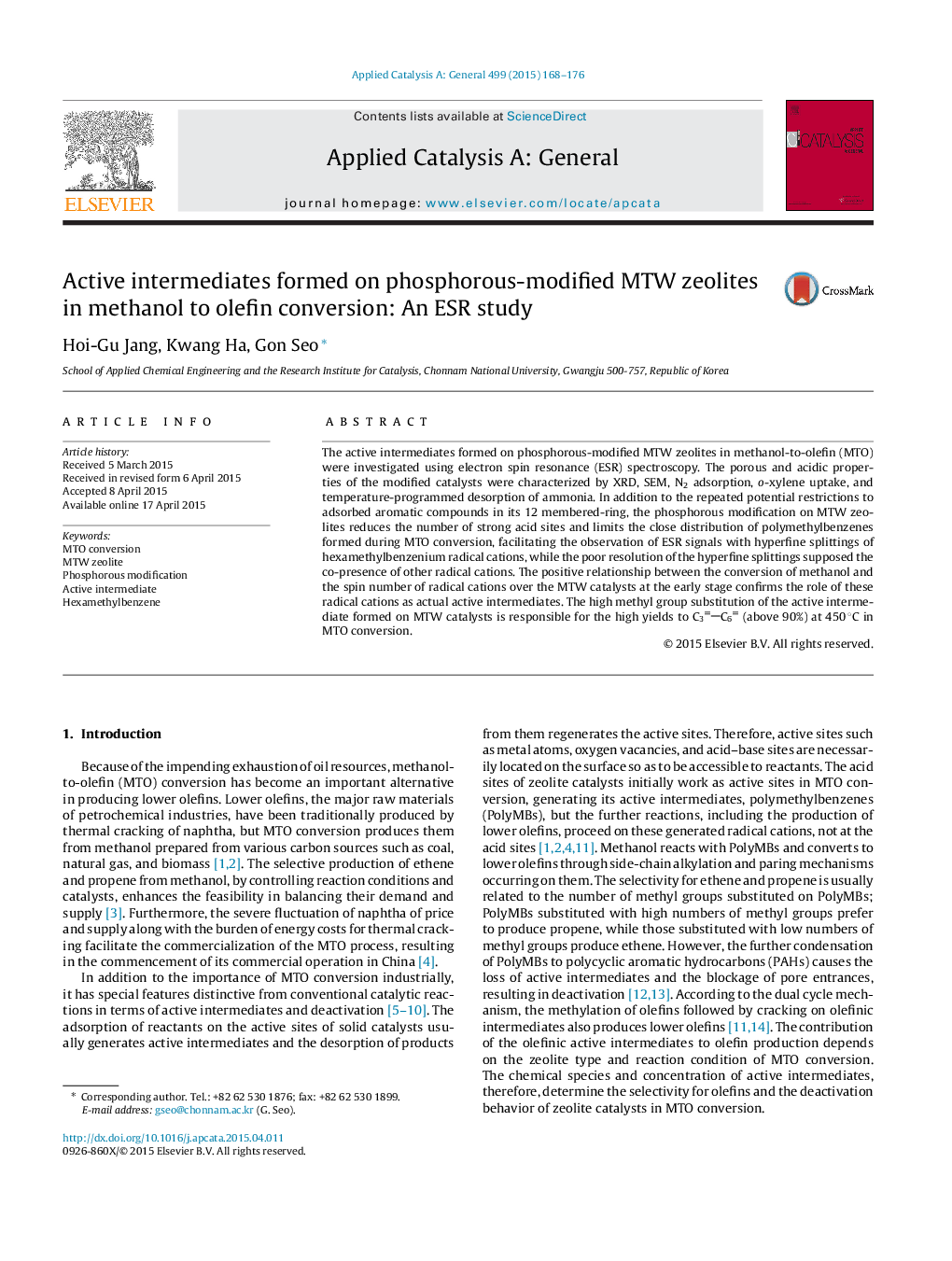| Article ID | Journal | Published Year | Pages | File Type |
|---|---|---|---|---|
| 39198 | Applied Catalysis A: General | 2015 | 9 Pages |
•Phosphorous modification on MTW zeolites reduces the strong acid sites.•P(1.5)-MTW resulted in the yields of C3C6 above 90% at 450 °C in MTO.•P-modification facilitates the observation of ESR signals with hyperfine splittings.•ESR signals confirm the formation of hexamethylbenzene as an active intermediate.
The active intermediates formed on phosphorous-modified MTW zeolites in methanol-to-olefin (MTO) were investigated using electron spin resonance (ESR) spectroscopy. The porous and acidic properties of the modified catalysts were characterized by XRD, SEM, N2 adsorption, o-xylene uptake, and temperature-programmed desorption of ammonia. In addition to the repeated potential restrictions to adsorbed aromatic compounds in its 12 membered-ring, the phosphorous modification on MTW zeolites reduces the number of strong acid sites and limits the close distribution of polymethylbenzenes formed during MTO conversion, facilitating the observation of ESR signals with hyperfine splittings of hexamethylbenzenium radical cations, while the poor resolution of the hyperfine splittings supposed the co-presence of other radical cations. The positive relationship between the conversion of methanol and the spin number of radical cations over the MTW catalysts at the early stage confirms the role of these radical cations as actual active intermediates. The high methyl group substitution of the active intermediate formed on MTW catalysts is responsible for the high yields to C3C6 (above 90%) at 450 °C in MTO conversion.
Graphical abstractFigure optionsDownload full-size imageDownload high-quality image (83 K)Download as PowerPoint slide
